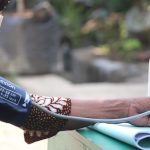The ONE organ responsible for high blood pressure.
Helpful Tips That Will Make Your Blood Pressure Lower In Minutes

What is blood pressure?
Blood pressure is the force with which blood pushes against the walls of the arteries as the heart pumps blood. When a health care professional measures blood pressure, he uses a cuff on the arm that gradually tightens. The result of the measurement is given as two numbers. The first number, called the systolic pressure, is the pressure caused by the heart contracting and pushing blood out. The second number, called diastolic pressure, is the pressure when the heart relaxes and fills with blood.
The blood pressure value is given as a quotient of systolic and diastolic pressure. Blood pressure levels are classified based on these two numbers.
Low blood pressure, or hypotension, is a systolic pressure of less than 90 or a diastolic pressure of less than 60. If you have low blood pressure, you may feel lightheaded, weak, dizzy and even faint. This can be caused by insufficient fluids, blood loss, certain medical conditions or medications, including those prescribed for high blood pressure.
Normal blood pressure for most adults is a systolic pressure of less than 120 and a diastolic pressure of less than 80.
Elevated blood pressure is defined as a systolic pressure between 120 and 129 with a diastolic pressure of less than 80.
High blood pressure is defined as 130 or more for the first number, or 80 or more for the second number.
What is the blood pressure in a healthy person?
General guidelines: an ideal blood pressure is one that is between 90/60mmHg and 120/80mmHg. high blood pressure is one that is 140/90mmHg or more. low blood pressure is one that is 90/60mmHg or less.
What is hypertension?
Hypertensive crisis is a serious increase in blood pressure that can lead to stroke. Extremely high blood pressure - an upper number (systolic pressure) of 180 millimeters of mercury (mm Hg) or higher or a lower number (diastolic pressure) of 120 mm Hg or higher - can damage blood vessels.
Tips that will make your blood pressure go down in minutes
- Take a warm bath or shower. Stay in the shower or tub for at least 15 minutes and enjoy the warm water. This can also help reduce muscle tension.
- Perform a breathing exercise. Take a deep breath from your core, hold your breath for about two seconds, and then slowly exhale. Stop for a few moments and repeat.
- Relax! Stress is one of the main contributors to high blood pressure, so do your best to relax. This can be as simple as sitting in a quiet room for a few moments, doing some stretching exercises, reading a good book or meditating.
- Losing excessive weight
- Quitting smoking
- Limiting alcohol and caffeine intake
- Prioritizing sleep
- Avoiding stressful situations if possible
- Eating less sodium, sugar, refined carbohydrates and processed foods
- Regular low-intensity exercise (about 30 minutes each day)
- Taking medication to lower blood pressure
- Headaches
- Nosebleeds
- Dizziness
- Redness of the skin
- Bloody urine
- Sudden changes in vision
- Chest pain
- Shortness of breath
- Problems with speaking
- Sudden back pain
- Nausea or weakness









